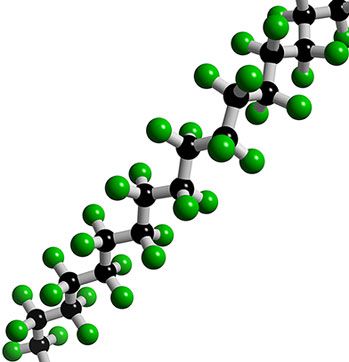-
 Compressed air engine
Compressed air engine
-
 Cave
Cave
-
 MAO-B inhibitor
MAO-B inhibitor
-
 Entropy
Entropy
-
 Chromosome
Chromosome
-
 Partial unbundling
Partial unbundling
-
 STI
STI
-
 FDA
FDA
-
 Aerocapture
Aerocapture
-
 Elective surgery
Elective surgery
-
 Sexual dimorphism
Sexual dimorphism
-
 HELIOS
HELIOS
-
 Dysplasia
Dysplasia
-
 Hysteroscopy
Hysteroscopy
-
 CRC
CRC
-
 Xbox 360
Xbox 360
-
 Allergy
Allergy
-
 Winter solstice
Winter solstice
-
 Transgene
Transgene
-
 Mucilage
Mucilage
-
 M81
M81
-
 Raman effect
Raman effect
-
 Conductance
Conductance
-
 Pheochromocytoma
Pheochromocytoma
-
 IETF
IETF
-
 Transatlantys
Transatlantys
-
 Zodiacal light
Zodiacal light
-
 Wood pellets
Wood pellets
-
 Homochromy
Homochromy
-
 Chardonnay
Chardonnay
Teflon
Polytetrafluoroethylene (PTFE), or teflon, was discovered in April 1938 by the chemist Roy Plunkett while working for the American chemical company E.I. du Pont de Nemours and Company. It is stable to high temperatures with high chemical inertia and anti-adhesive power. It was discovered accidentally by Plunkett while he was working on the development of a new refrigerant by cooling tetrafluoroethylene gas in dry ice.
Uses of teflon
It was the first frying pan coated with Teflon non-stick resin under the brand name of Tefal (the contraction of Teflon and aluminium) in the United States in 1956 that made the polymer a household name. But its first application was in the Manhattan project. PTFE was used for the seals in uranium 235 production for nuclear weapons. It was the only material able to resist the corrosive acids formed during the production of uranium.
 Part of a Teflon molecule. The fluorine atoms are green and the carbon atoms are black. © Karl Harrison
Part of a Teflon molecule. The fluorine atoms are green and the carbon atoms are black. © Karl Harrison
Latest
Fill out my online form.



